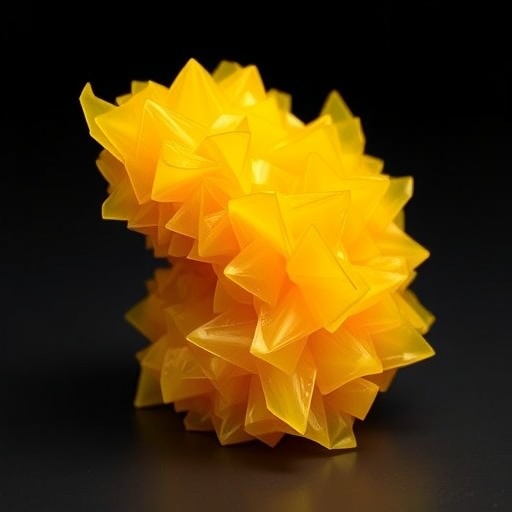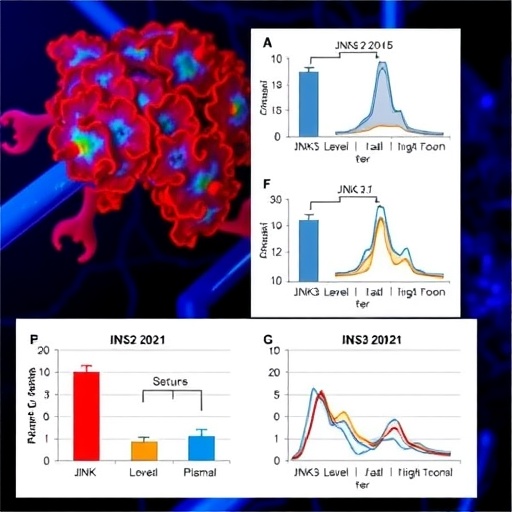In a groundbreaking advance for the fields of materials science and medical safety, researchers have developed a comprehensive set of reference standards aimed at transforming the non-targeted analysis of polymer additives extracted from medical devices. This innovative framework addresses long-standing challenges in identifying and quantifying the myriad chemical additives embedded within polymeric materials, which have significant implications for patient safety, regulatory oversight, and environmental health. By enabling more precise and thorough chemical profiling, the study lays foundational work that may revolutionize how scientific and regulatory bodies monitor the chemical complexity of medical device components.
Polymers constitute the backbone of many medical devices due to their versatility, durability, and biocompatibility. However, these polymers are rarely pure; they are formulated with a complex mixture of additives designed to modulate their physical, chemical, and biological properties. These additives can include plasticizers, antioxidants, stabilizers, lubricants, and colorants, among others. While necessary for performance, the presence of these additives poses an analytical challenge, especially since many are unknown or unregulated, potentially leading to unpredictable interactions within the human body.
Traditional analytical methods in polymer additive analysis often rely on targeted approaches, which focus on detecting specific known substances. While effective for routine screening, these methods fall short when addressing the non-targeted identification of unknown or emerging additives. Non-targeted analysis, by contrast, aims to cast a wider net by detecting and characterizing unknown substances without preconceived biases. Yet, a critical bottleneck in this approach has been the lack of standardized reference materials to calibrate instruments and validate findings, especially when dealing with the highly heterogeneous chemical profile of polymer additives.
.adsslot_Bcs2SC4WPv{ width:728px !important; height:90px !important; }
@media (max-width:1199px) { .adsslot_Bcs2SC4WPv{ width:468px !important; height:60px !important; } }
@media (max-width:767px) { .adsslot_Bcs2SC4WPv{ width:320px !important; height:50px !important; } }
ADVERTISEMENT
To bridge this gap, the research team, led by Yun, Herath, and Jin, embarked on designing a carefully curated set of reference standards. These standards simulate the complex chemical landscape found in actual polymer formulations used in medical devices. By encompassing a wide spectrum of additive classes and concentrations, the reference standards serve as definitive benchmarks against which non-targeted analytical techniques can be calibrated and assessed for accuracy, sensitivity, and reproducibility. The impact of these standards extends beyond mere calibration; they provide a shared framework that can unify disparate research efforts across academia, industry, and regulatory agencies.
The creation process involved meticulous selection of representative additives commonly found in medical-grade polymers. The team synthesized mixtures that mirror the intricate interplay of chemical constituents typical in real-world products. Their methodological rigor ensured the reference materials replicate not only the chemical identities but also the matrix effects and extraction profiles encountered during analysis. This fidelity is crucial since polymer matrices can introduce complex interferences that obscure the detection of minor components, complicating interpretation.
Once established, these reference standards were subjected to a comprehensive evaluation using advanced analytical platforms such as high-resolution mass spectrometry and chromatographic techniques. The team leveraged state-of-the-art non-targeted workflows to test the effectiveness of their standards in detecting a broad range of additives. Results demonstrated remarkable improvements in the detection limits, identification confidence, and quantification capabilities when using the newly designed reference sets. Moreover, the standards facilitated the fine-tuning of data processing algorithms critical to deconvoluting overlapping spectral signals—a common challenge in polymer additive analysis.
One notable aspect of this research is its potential to greatly enhance the transparency and safety profiling of medical devices. Polymers within these devices undergo prolonged direct contact with human tissues, raising concerns about leaching additives that could provoke adverse reactions or long-term toxicity. Regulatory agencies rely heavily on robust chemical data to evaluate product safety. The availability of standardized reference materials supports regulatory compliance by enabling more objective, reproducible assessments, reducing uncertainties about unknown or undocumented additives.
Beyond the immediate medical device sphere, the implications of this work touch upon environmental toxicology and waste management. Polymer additives released during manufacturing, use, or disposal can enter ecological systems, where their fate and impacts remain poorly understood. Non-targeted analysis empowered by reliable reference standards opens avenues to monitor environmental contamination more effectively, linking human health risks to environmental exposures in a coherent scientific framework.
The interdisciplinary nature of this project also highlights the growing trend toward integrated analytical and materials sciences. By combining expertise in polymer chemistry, analytical chemistry, and epidemiology, the researchers have set a precedent for collaborative problem-solving that transcends conventional disciplinary boundaries. This holistic approach is essential given the complexity of chemical mixtures and their multifaceted interactions within biological and environmental systems.
As non-targeted analysis continues to gain momentum in emerging fields like exposomics—the comprehensive study of environmental exposures affecting human health—the need for high-quality reference materials becomes paramount. The standards developed by Yun and colleagues thus represent a critical infrastructure enabling exponential growth in the sophistication and reliability of chemical exposure assessments. This, in turn, empowers researchers to uncover previously hidden associations between chemical exposure and health outcomes.
The study also prompts a reevaluation of current manufacturing and material selection practices in the medical industry. By shedding light on the chemical diversity and potential unknowns in device materials, it encourages manufacturers to adopt more transparent and safer formulations. Innovations in additive chemistry may emerge as companies seek to minimize hazardous components, ultimately benefiting patients and healthcare providers.
From a technological perspective, the reference standards catalyze improvements in instrumentation and data analysis methodologies. High-resolution instruments, fueled by validated standards, can push detection capabilities to new heights, enabling even trace-level contaminants to be accurately identified. Data science techniques such as machine learning and pattern recognition are well-poised to exploit these advancements, facilitating automated interpretation of complex analytical datasets.
Looking ahead, the researchers envisage expanding the library of reference standards to cover a broader array of materials and additive chemistries, including emerging nanomaterials and bio-based polymers. Such expansion would reinforce the comprehensive coverage necessary for the fast-evolving landscape of polymer science, ensuring that analytical capabilities keep pace with innovation in medical device technologies.
Finally, this development marks a significant milestone in the pursuit of safer, more transparent healthcare products. As regulatory landscapes worldwide become more stringent regarding chemical safety and environmental impact, the availability of standardized tools to monitor and identify polymer additives is nothing short of transformative. The study spearheaded by Yun and their team is positioned to become a cornerstone reference, inspiring further innovations that safeguard public health while advancing scientific frontiers.
Subject of Research: Development of reference standards for non-targeted analysis of polymer additives extracted from medical devices
Article Title: Designing a set of reference standards for non-targeted analysis of polymer additives extracted from medical devices
Article References:
Yun, B.H., Herath, A., Jin, Y. et al. Designing a set of reference standards for non-targeted analysis of polymer additives extracted from medical devices. J Expo Sci Environ Epidemiol (2025). https://doi.org/10.1038/s41370-025-00788-w
Image Credits: AI Generated
DOI: https://doi.org/10.1038/s41370-025-00788-w
Tags: analytical methods for polymersbiocompatibility of polymeric materialschallenges in polymer analysischemical profiling of polymer additivescomplex mixtures in polymer formulationsenvironmental health and polymer additivesimplications of additives in healthcare materialsnon-targeted analysis of polymerspatient safety in medical devicespolymer additive analysisreference standards for medical devicesregulatory oversight of polymer materials





